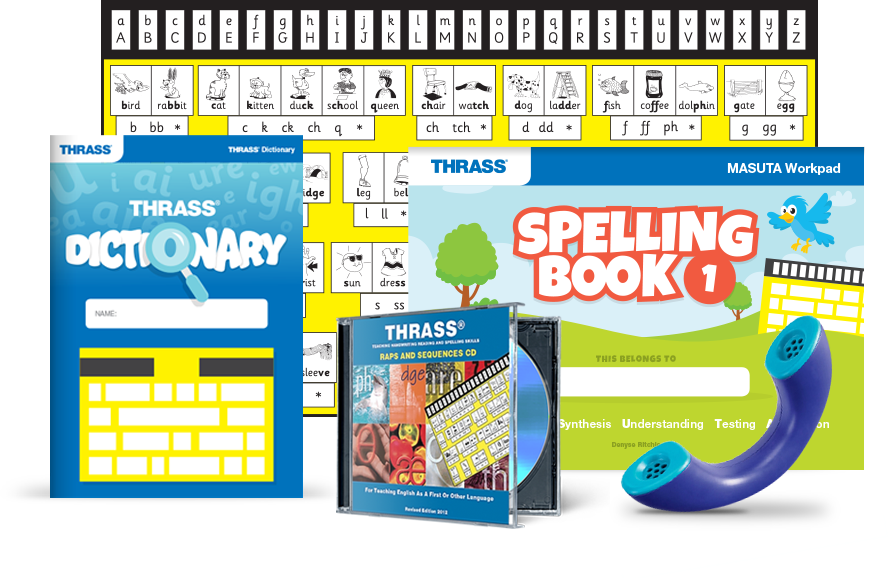Welcome to The THRASS Institute
The THRASS Institute (Australasia & Canada) is an Australian based company that has developed a Specific Pedagogical Practise (SPP) for the teaching of literacy, marketed as THRASS – an acronym for ‘Teaching Handwriting, Reading And Spelling Skills’.
THRASS is a phonetics teaching-tool that has made a paradigm shift in the teaching of phonetics. It has a phonographic, multisensory focus, complemented by an analogous learning model that makes reading and spelling acquisition much simpler, faster and more sustainable than conventional ‘phonic’ approaches. As a classroom strategy THRASS is fun, systematic, explicit and linguistically correct.
THRASS is a phonetics teaching-tool that has made a paradigm shift in the teaching of phonetics.
It has a phonographic, multisensory focus, complemented by an analogous learning model that makes reading and spelling acquisition much simpler, faster and more sustainable than conventional ‘phonic’ approaches. As a classroom strategy THRASS is fun, systematic, explicit and linguistically correct.

Effective Tools and Resources
The THRASS SPP and accompanying THRASS charts and teaching resources have been highly effective in schools and learning institutions since 1998 and are the most widely used and recognised teacher reference tools for teaching the phonographics and orthography of English.
English Does Not Have a 1:1 Ratio of Letters to Sounds
English words are produced using a combination of 44 individual speech sounds called ‘phonemes’. These phonemes can be represented in writing using the 26 letters of the English alphabet, either individually or combined with other letters. There are numerous spelling choices (graphemes) for each phoneme.
For example:
-
In English the letter ‘c’ does not just represent the sound ( c ) as heard at the beginning of words like cat. It can represent the sound ( s ) as in the words city, cent, Cindy etc. The sound ( f ) is not just represented by the letter ‘f’ but can be represented by the letters ‘ph’, as in photo, Sophie, Philip and Phoebe. The letter ‘y’ does not just represent the sound heard at the beginning of yawn, but more commonly represents the sound heard at the end of words like city, pony and Kelly, or the sound in the words my, fly and by.
-
Knowing the 44 sounds of English and the various spelling choices that can represent these sounds enables the learner to understand the spelling system (orthography) of our language.
By explicitly teaching these basic building blocks of English orthography, THRASS reduces handwriting, reading and spelling to their basics.

The Importance of Spelling and Literacy
Spelling and literacy are the cornerstones of education. If a learner cannot successfully spell words then they are less likely to succeed at formal learning. Additionally, skills and strategies for learning HOW to spell words are a very important part of the spelling process. Even if a learner is able to ‘spell a word’; if they do not understand the process they cannot use this knowledge to spell unfamiliar words.
As in mathematics, it is not just the correct answer that is important, the working memory and understanding of how to achieve the correct answer are vital to the cognitive process (deep understanding) for future learning.
Discover more about THRASS
-

THRASS Courses
View CoursesTHRASS courses have been designed to build teacher capacity in the teaching of phonics as an essential part of teaching reading and writing across the curriculum and grades.
-

Evidence-Based Research
View ResearchThe THRASS SPP and accompanying THRASS charts and teaching resources have been highly effective in schools and learning institutions since 1998.
-

THRASS Resources
View ResourcesTHRASS has an extensive suite of resources that can be used to assist in the successful implementation of THRASS methodology in the learning environment.



